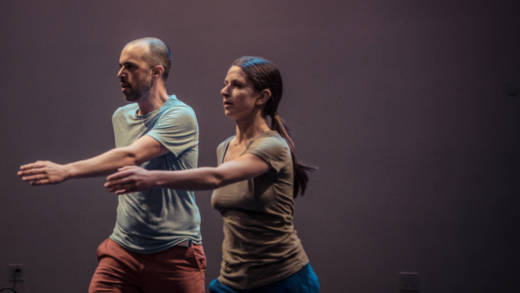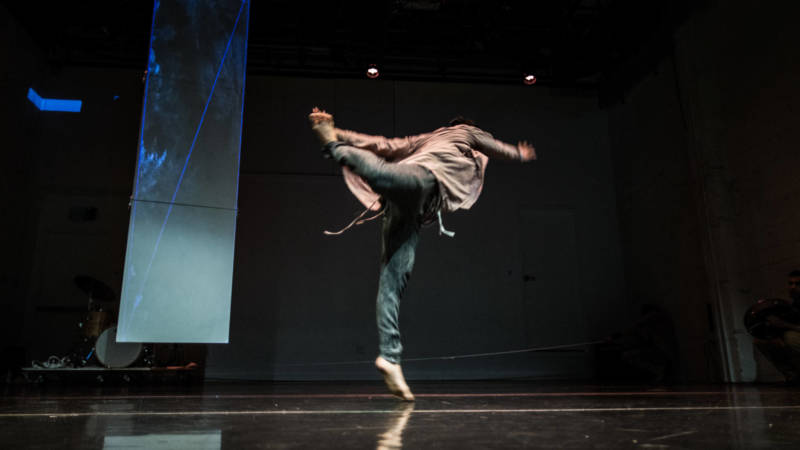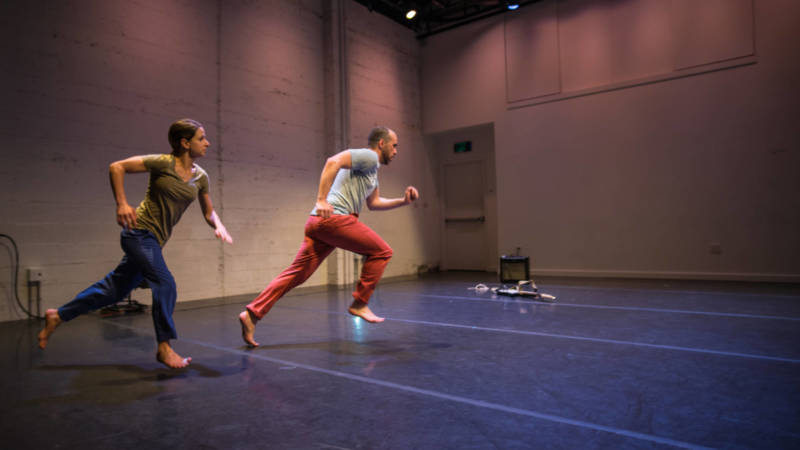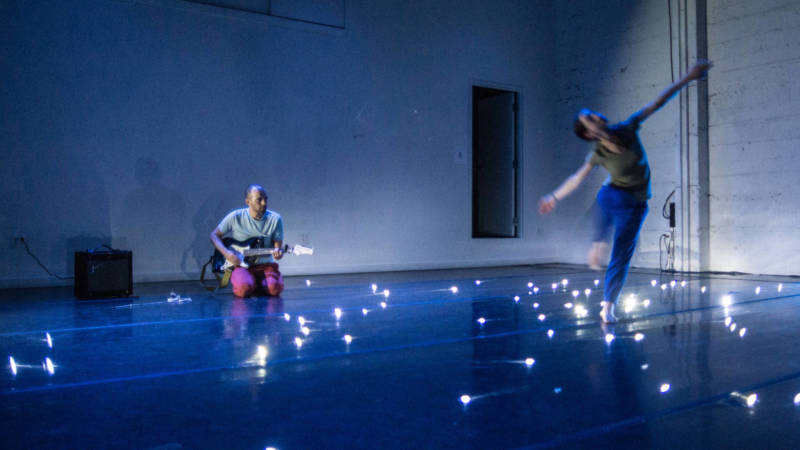Sometimes you wonder about the souls of theaters. CounterPulse certainly has a fascinating one. The San Francisco performing arts organization’s audiences, the way they commission and produce work, and the general vibe before and after performances feel at odds, in a good way, with how most performance is presented and consumed in the Bay Area.
You can certainly sense the company’s vision in the two pieces that comprise its “2017 Edge Residency,” a program dedicated to the development of work that slips somewhere between dance, theater, performance, and social advocacy.
Scarlett Cushion’s The Bell in the Blood begins with dancer Hien Huynh in a yellow duster collecting tickets at the door. He performs an elaborate and ornate bow for each audience member as they enter the theater. Once there, it appears that the performance has been humming along for some time: Aaron Kierbel gently plays the drums; Iu-Hui Chua contorts her body in a series of poses that seem more animal than human; and Todd Thomas Brown plays the bass behind the audience. The melody is gentle. But Brown plays at a volume that rumbles through your body, making you feel like you are peacefully on edge.
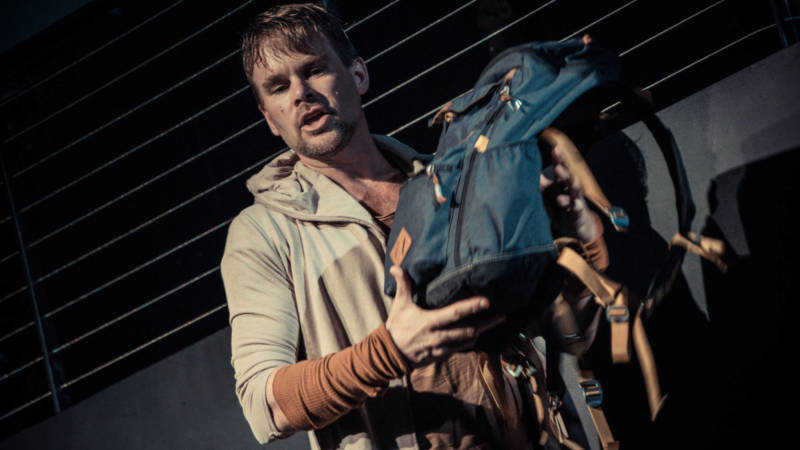
Perhaps because we’re used to dancers being the center of attention and bassists providing the support, it’s a little surprising when Brown strolls down the stairs next to us, and tells us about a little problem he’s been thinking about. He holds up a nifty REI backpack he bought four and a half months ago and asks: “How is it that I know everything that’s in here, but that I’ve lived in my body for over four decades and I know almost nothing of what’s in it?” It’s a nice beginning, though the writing could be pared some, and highlights the way the artists involved shift in and out of the limelight.
At one point, Kierbel plays the drums on a moving platform, as the others spin him around with ropes tied to the platform and their waists. Neither the rope metaphor nor the story of Kierbel’s feckless grandfathers fully succeeds. But the way the performers work together certainly does. A lot of dance and performance is star-driven. It’s as if the burning center of the work is in the vision of one person. With Scarlett Cushion, the pleasure is in the collective.
